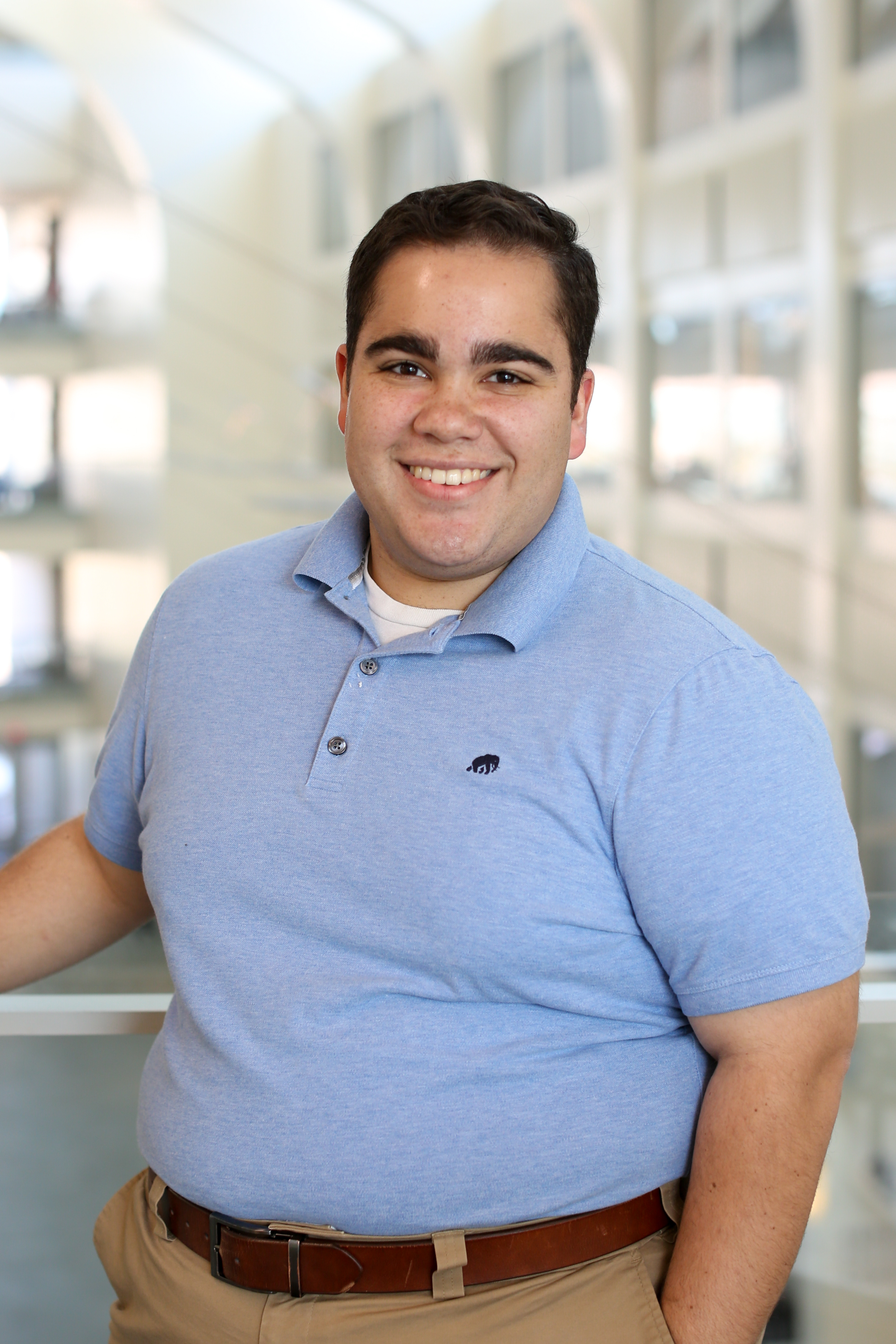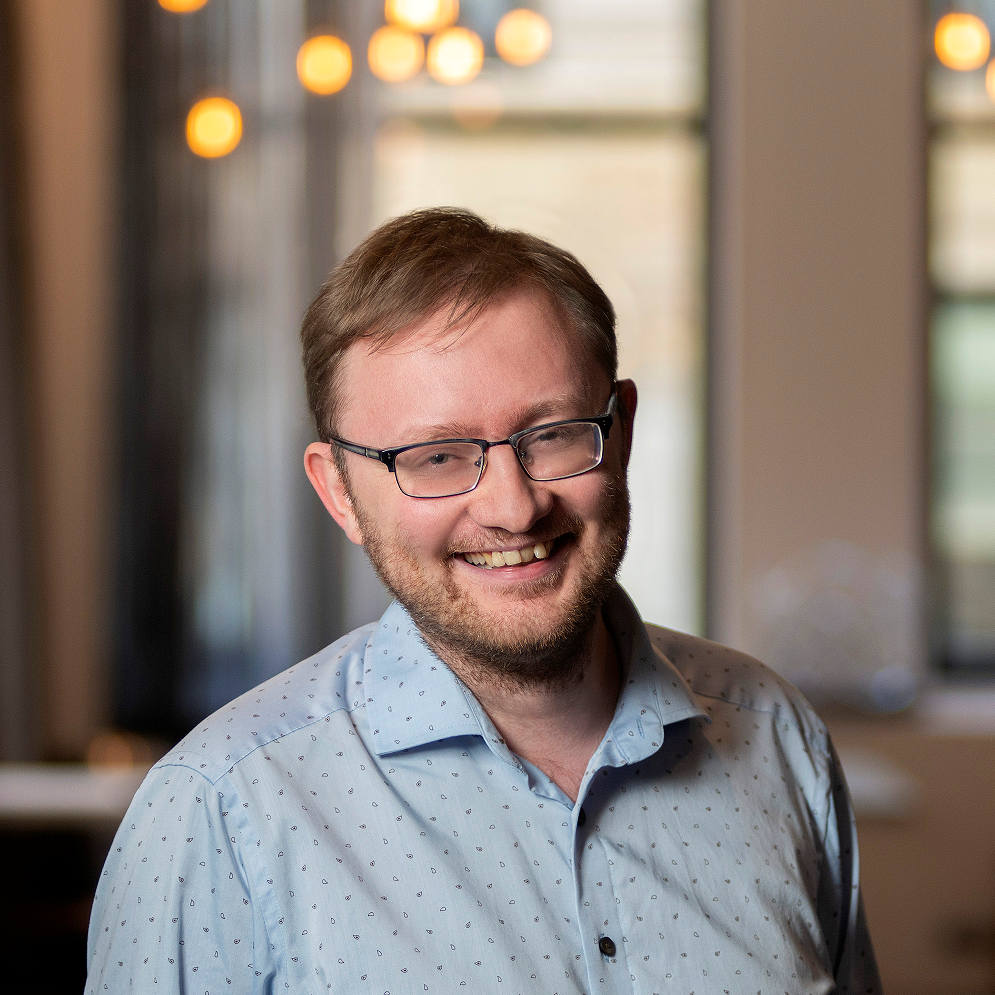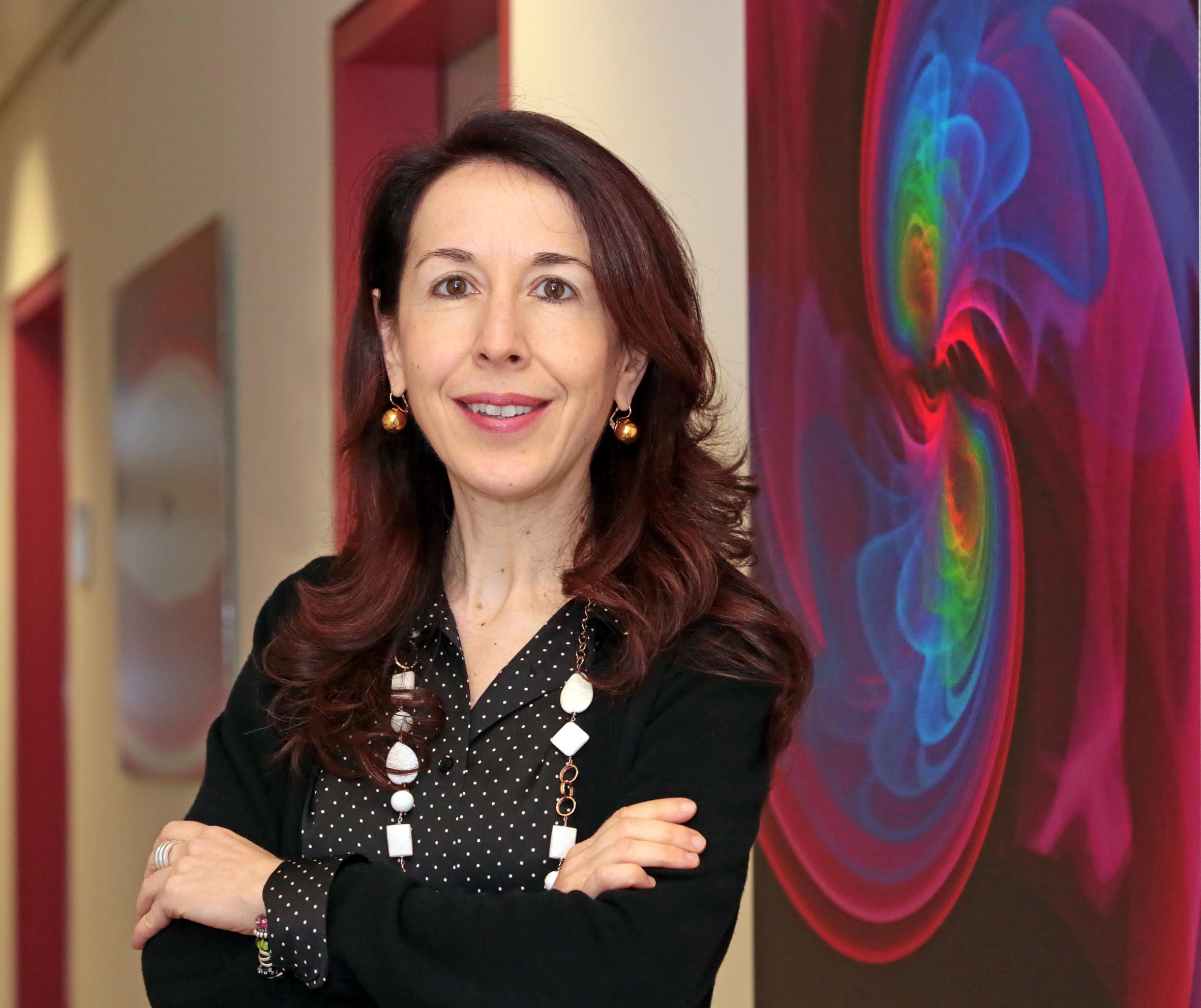Brian Clark Hunts for the Most Elusive and Energetic Neutrinos
- Details
- Published: Friday, September 08 2023 07:42
Brian Clark, a new assistant professor of physics at the University of Maryland, arrived with a mission: to detect the first ultra-high-energy neutrinos.
If spotted, these tiny, almost weightless particles that pass through matter with barely any interactions could offer a new lens through which to view the universe. The highest-energy neutrinos have about 100 times more energy than any of the particles speeding through the Large Hadron Collider, the world’s highest-energy particle smasher running underneath the France-Switzerland border. And scientists think that the energetic neutrinos are created by astrophysical events that might not leave any other detectable trace.
“I think the general theme of the work I do,” Clark said, “is that anytime you have a chance to look at the universe in a new way, you tend to learn something. So, I'm pro finding new ways to look at the universe.”

Clark brings to UMD a wealth of experience, a reputation of excellence in mentoring students and a history of leadership within scientific collaborations. His passion for looking at the universe in novel ways and for community building dates back to his undergraduate years studying physics at Washington University in St. Louis.
During his freshman and sophomore years, Clark had a few false starts. He wasn’t a fan of quantum mechanics for its reliance on mathematical tricks and worked in a couple of condensed matter physics labs that left him unexcited. Then, he stumbled into the astrophysics research group of Physics Professor Henric Krawczynski, who was working on detecting the polarization of celestial X-rays—Clark’s first exposure to a new way of looking at the universe.
“What really caught me with that project was how well astrophysics as a concept integrated the physics,” Clark recalled. “It doesn't utilize just one branch of physics—you have to think really cross-disciplinarily. You need to know statistical mechanics and electromagnetism and a little bit of dynamics to put all of these stories together. And I enjoyed thinking broadly in that sense.”
In Krawczynski’s group, Clark contributed to the development of a new method for analyzing data from a type of telescope that didn’t yet exist. This type of telescope, known as an X-ray polarimeter, would look at the polarization—or orientation—of X-ray light. While X-rays coming from remote reaches of the universe have been detected before, pinning down their polarization had always been difficult. Nevertheless, polarization was expected to carry extra information about the source of the X-rays, potentially elucidating things like the way matter collapsed into a black hole. Recently, an X-ray polarimeter called IXPE launched into orbit, and the work Clark contributed to has emerged as the main data analysis method for scientists using the telescope.
“It's been fun to watch the citation count tick up,” Clark said.
In his undergraduate years, Clark also participated in many community-oriented activities. He was a residential advisor at his dorm and volunteered as both an orientation leader and a tour guide. During his senior year, Clark was torn between his passion for physics and his enthusiasm for community building. He applied to physics and higher education administration graduate programs. However, he couldn’t imagine leaving science altogether. By the end of his senior year, he firmly settled on physics.
Clark enrolled at Ohio State University and joined the group of Physics Professor Amy Connolly to work on what would become the subject of his career—high-energy neutrinos.
“He walked in my office looking for a spot and he was just glowing with enthusiasm, like he always is,” Connolly recalled.
With Connolly’s support, Clark landed a National Science Foundation Graduate Research Fellowship to support his studies.
“Neutrinos are really young as a discipline, especially high-energy neutrinos,” he said. “They're a pretty new way of looking at the night sky. And that was really intriguing to me. It’s a really nascent field that's just finding its feet.”
Neutrinos are a peculiar type of particle. Of all the particles that have mass, they are the lightest. They have no electrical charge and only interact weakly via gravity and the nuclear forces responsible for radioactivity. Because of this, they largely pass through matter, including humans, unimpeded, which has earned them immortality in a poem by John Updike. It’s estimated that 100 trillion neutrinos pass through you every second.
The reluctance of neutrinos to interact with anything else meant that they remained undetected until 1956. But once they were discovered, it didn’t take long for scientists to conceive of using neutrinos as a sort of telescope to look at the universe. Scientists first spotted neutrinos coming from the sun in 1968, but it took until 2013 for anyone to find neutrinos originating from outside the solar system. These were detected by an experiment called IceCube, located at the South Pole in Antarctica.
The basic idea of the IceCube experiment is simple: Neutrinos almost never interact, but one way to catch them is to provide a really big target and wait around for signs that a neutrino smashed into it. Luckily, the big target already exists—ice around the South Pole is dense enough to provide a decent chance of interaction, and there’s lots of it. So, scientists buried detectors deep into Antarctic ice sheets. If, by chance, a neutrino comes close enough to one of the atomic nuclei inside the ice molecules, it will cause something akin to an explosion, sending out a shower of particles and radiation, from flashes of optical light to radio waves.
The IceCube detectors capture the light, which indicates what direction a neutrino came from and how much energy it had. This provides a new way to look at the universe, distinct from optical imaging with tools like the James Webb Space Telescope or gamma and X-ray detectors. Neutrinos carry information about powerful cosmic events, like exploding stars and black holes, that are hard to see by other means.
IceCube’s method for detecting astronomical neutrinos works well for neutrinos that carry up to about a trillion times the energy of a typical electron meandering around a hydrogen atom. But for the ultra-high energies that Connolly’s group was interested in—another million times more energetic—it was destined to fall short.
Ultra-high-energy neutrinos are likely produced by cosmic ray bursts that are otherwise too difficult to see because their heavier components get bent by magnetic fields and everything but neutrinos gets bogged down in the celestial sludge left over from the early universe known as the cosmic microwave background. These neutrinos are extremely rare, and the volume of ice filled with IceCube detectors is too small to stand a reasonable chance of catching one.
To increase the volume of detection, scientists turned to radio-wave detectors. The radio signal produced by neutrino explosions in ice is stronger for the highest-energy neutrinos, and it’s also able to travel much farther through ice without getting absorbed. So, fewer radio detectors can be placed larger distances apart to capture signals from a greater volume. In hopes of catching some ultra-high-energy neutrinos, scientists started building the Askaryan Radio Array (ARA), an array of radio detectors near the IceCube experiment, to detect neutrino events anywhere within 10 cubic kilometers of ice (compared to 1 cubic kilometer for IceCube).
As a graduate student, Clark got his hands dirty with every aspect of the ARA experiment. He built two of the five radio detectors that were deployed and refurbished two more. He then went down to Antarctica, where he played a role in installing the detectors into the ice.
“Antarctica was a really wild place,” Clark said. “It's constantly trying to kill you. But it's also a really beautiful place with a really unique community. It was great.”
After returning from Antarctica, Clark led the most comprehensive data analysis of ARA’s high-energy neutrino search to date. So far, they haven’t caught any of the elusive particles. But for this type of detector, they set the tightest limits on how many ultra-high-energy neutrinos could be hitting Earth. They developed efficient data analysis techniques that could be applied to a variety of detectors, operating over many years.
“The detectors always look and behave a little bit differently, but you have to rely on all of them working together in order to do the science,” Clark said. “We demonstrated that you can do this kind of analysis at scale—that you can take data from detectors that look a little bit different, behave a little different and have been running for a long time.”
In addition to his hardware contributions, Clark also helped develop software that models neutrino interactions to aid in designing the next generation of detectors. In particular, he focused on how the signal from a neutrino explosion propagates through the ice. This is no easy task—the ice changes density from bottom to top, and the model needs to simulate millions of optical or radio signals traveling through it. Clark and his collaborators found and implemented an efficient way to model the curved trajectories the signals take, enabling the simulation to run in a reasonable timeframe.
Clark’s mastery of all aspects of the ARA experiment, as well as his approachable nature, made him a valuable resource for junior members of the project and other collaborators.
“One thing that’s really characteristic of Brian is what a fantastic mentor he is,” Connolly said. “He's always there to help, almost to a fault. I would always tell him, ‘Brian, you can point people to other places to get information.’ But everyone always wants to talk to Brian.”
After earning his Ph.D., Clark was awarded the prestigious NSF Astronomy and Astrophysics postdoctoral fellowship. He joined the physics and astronomy department of Michigan State University and brought the high-energy neutrino program there for the first time.
“He was largely independent,” said Tyce DeYoung, one of Clark’s co-advisers at Michigan State and an associate professor of physics and astronomy. “He was sort of breaking new ground for the group here at Michigan State.
While there, Clark extended the search for ultra-high energy neutrinos to optical signals by finding new ways of analyzing data from IceCube. He also played key roles in planning the next generation of IceCube and a new neutrino-detection experiment being built in Greenland called the Radio Neutrino Observatory in Greenland (RNO-G), which has become part of his research focus at UMD.
Throughout his graduate and postdoctoral career, Clark carried on his passion for community leadership and mentorship. As a graduate student, he helped design and facilitate Ohio State’s ASPIRE program, a hands-on physics research workshop for high school girls. He also brought physics demos to elementary schools and served for 18 months on his department’s Climate and Diversity Committee. As a postdoc, he was an early career scientist representative to the IceCube governance board and served on the IceCube collaboration’s working group on diversity and inclusion.
DeYoung appreciated Clark’s involvement with community building.
“It was a great pleasure to work with him and to see him broaden his horizons while he was here, and to start to think about not just the scientific aspects of how you build a detector and how you analyze data, but also expanding to thinking about how you organize people to build these big projects and to operate these big projects,” DeYoung said. “How do you communicate with the scientific community and foster the sort of scientific community that we want?”
Now, Clark is looking forward to bringing his passions for the high-energy neutrino search and community building to UMD.
“UMD is a really exciting nexus,” Clark said. “It's a really unique blend of experimental approaches, that makes it a unique place.”
Written by Dina Genkina


